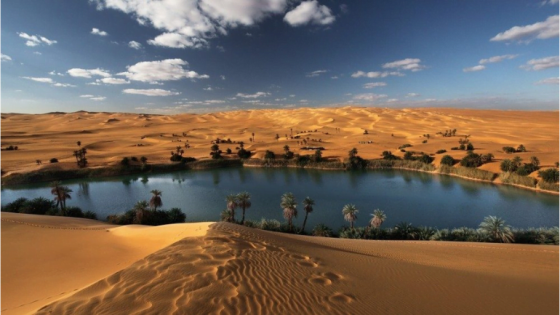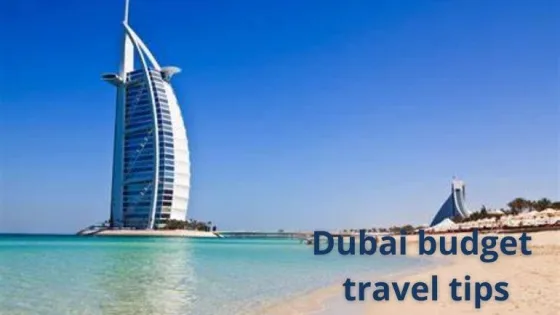Contents
UAE Oasis Locations appear to be the inverse of islands in general. This is due to the fact that oases are lush green areas in the wilderness located near a water source. A spring or well is typically used as the water source. The region’s natural desert landscape has many spots that offer recreational opportunities for everyone. Here, we will list the notable oases in the UAE that serve as great tourist attractions and ideal retreats for city families.
UAE Oasis Locations
Because it is an in-situ repository of date palm genetic resources, the UAE desert oasis locations are considered globally significant. It is also a testament to human agricultural and technological ingenuity in harsh environmental conditions, as it is home to the falaj irrigation systems.
The oases are responsible for the desert’s landscape. These lush green havens depict the cultural transformation that occurred during the transition from nomadic to settled communities around the oasis and are an indicator of the first stage of city development in the UAE prior to the discovery of oil in the 1960s. This heritage, which is displayed to visitors, represents an entire way of life and culture in the oasis landscape.
Read more: UAE Sand Dunes
Al Ain Oasis World Heritage Site
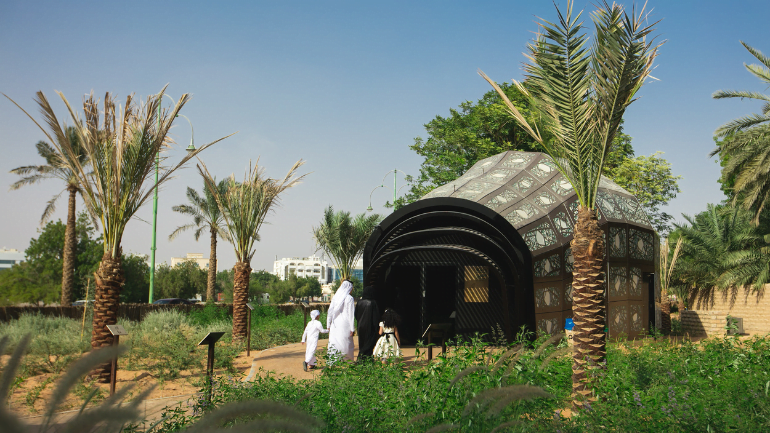
This 3,000-acre historic oasis in Al Ain transports you back in time to when the region was first inhabited by settlers four millennia ago. Al Ain Oasis was designated a UNESCO World Heritage Site in 2011. It was later opened to the public with a few modern additions. These included the construction of an Eco-Center as well as shaded pathways in addition to the 147,000 date palms. The UAE oasis is also home to hundreds of different plant and animal species. Some farms in the area are still in operation.
Walking under the thick canopy of leafy date palms, we are comfortably shielded from the glare of the blazing sun, despite the fact that temperatures outside are hovering around 40 degrees Celsius. The verdant green date palm plantations that make up the Al Ain Oasis, located right in the heart of the city in the Al Mutawa area around 90 miles east of Abu Dhabi, stretch out before us, covering 1,200 hectares.
The stunning Al-Ain Oasis is located in Al Mutawaa and is one of the best places to visit while in Al Ain. Visitors should keep in mind that the Al Ain Oasis is open daily from 9:00 a.m. to 5:00 p.m. The area’s shops, restaurants, and cafes are open from 12:00 p.m. to 9:00 p.m.
Take a look at: UAE Mangrove Forests
The Ancient Oasis Al Ain
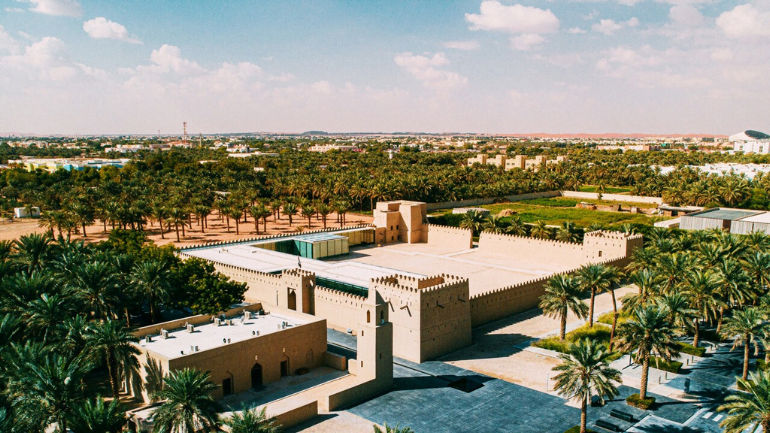
Most visitors to the UAE do not include Al Ain Oasis city on their itinerary, but this was not always the case. Al Ain, a key stopping point on ancient trade routes across the Arabian Peninsula, provided welcome relief to travelers on long, arduous camel journeys through the surrounding deserts. Archaeological discoveries near Al Ain indicate that trade caravans traversed the area as early as 1300 B.C.E., during the Iron Age.
These oases exist today, and the modern city has grown up around them. Al Ain’s six oases, filled with working farms containing 147,000 date palms and thousands of other fruit trees, offer a glimpse of a different way of life, one that predates the rapid urbanization that has taken over other cities in the country.
The oases here are vast expanses of well-organized date palm plantations separated by stone pathways and walls, with channels of water running through them. They don’t fit the storybook image of palm-fringed pools of water appearing like mirages in the dunes. Look up into the trees to see farmers tending their crops, climbing barefoot up to the dates with a rope and a thick belt for support, a technique they’ve used for centuries.
The oases’ farms are watered by the ancient falaj irrigation system, a clever network of underground and surface channels that has been in use for 3,000 years. However, the history of this location dates back even further. Archaeologists have discovered evidence of human life in Al Ain dating back to the Neolithic period, approximately 8,000 years ago.
Read more: UAE Mountains
Al Ain Oasis Irrigation System ‘falaj’
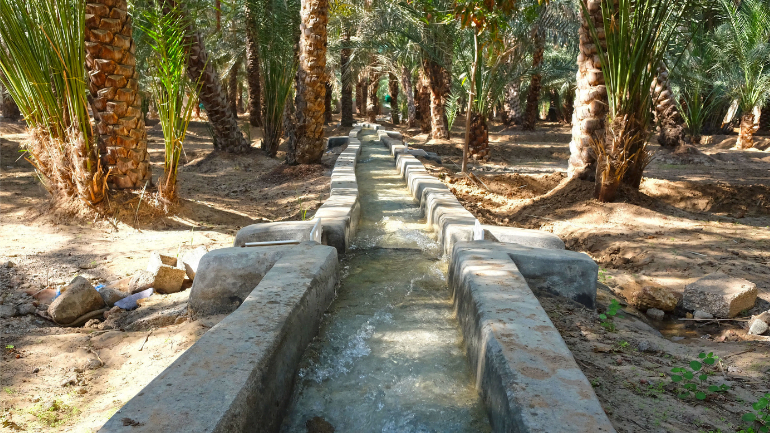
In terms of water, the site has a shared water supply that includes both wells and the local ‘falaj’ irrigation system, which taps into underground wells. This system has been in operation for centuries. At the Eco-Center, Oasis Center, visitors can learn more about these irrigation systems and other features of Al Ain Oasis in the UAE. You can also see conservation efforts to preserve the oasis’s ecosystem and traditional farming methods that are still practiced.
This irrigation method consists of a clever system of underground and/or surface channels that also prevent evaporation loss. Water is tapped either from mother wells drilled down to the water table or by excavating an underground tunnel from the source of an aquifer located beneath higher land or mountains. The tunnel gradually descends until it reaches low-lying oases, where it appears.
Read more: UAE Karst Topography
Jebel Hafit Desert Park
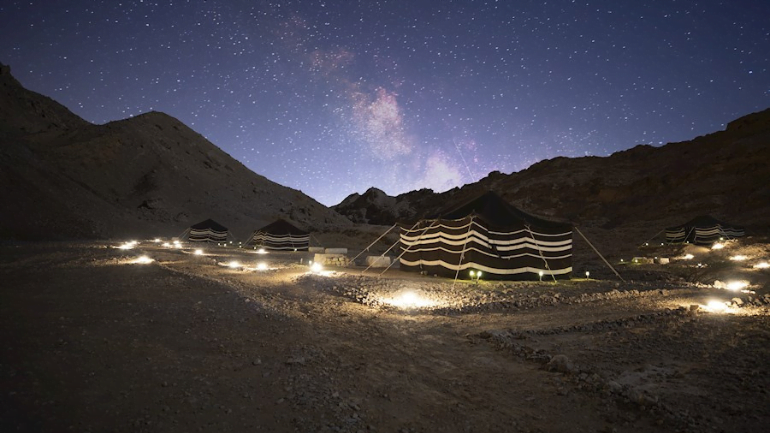
The Jebel Hafit Desert Park is one of the best places to experience Al Ain’s ancient past and one of the best places to spend the night. This five-mile stretch of gravelly sand dotted with thorny acacia trees, is located at the foot of Abu Dhabi’s mountain, Jebel Hafit, and only 20 minutes by car from the center of town, and it is home to more than 500 Bronze Age tombs dating back 5,000 years.
Some “beehive” tombs have been fully restored and returned to their original form, while others are nothing more than piles of rocks, still guarding their secrets. Pura Jebel Hafit’s transparent-sided dome tents for overnight stays are located within the park, each with its own bathroom and fire pit.
Not only did ancient travelers pass through Al Ain on their way across the Arabian Peninsula. Sir Wilfred Thesiger, an English explorer, and his Bedouin guides stopped in Al Ain on their arduous camel expeditions across the vast desert of the Rub’ al-Khali Empty Quarter in the 1940s, making the journey twice and chronicling the experience in his book “Arabian Sands”.
A gallery in Al Ain’s Al Jahili Fort houses a permanent collection of fascinating photographs taken by Sir Thesiger on his travels. The fort is an elegant mud-brick structure with crenelated walls and circular watchtowers that date back to the 1890s.
Read more: Heritage UAE
Liwa Oasis
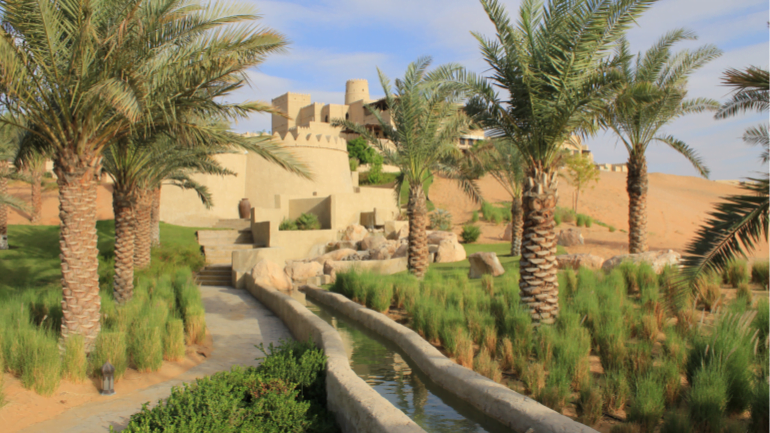
Liwa Oasis is the UAE’s second listed oasis. Liwa Oasis Abu Dhabi, with its lush greenery and red sand dunes, is the home of the UAE’s well-known Bani Yas tribe. Along with sand dunes, this oasis has farms and forts that are over a century old.
This UNESCO World Heritage Site in the UAE is located to the north of Rub Al Khali (Empty Quarter) and is the world’s largest uninterrupted sand mass. It stretches for over 100 kilometers and is home to some of the world’s largest dunes, many of which rise more than 150 meters.
The water for Liwa Oasis in Abu Dhabi comes from a water table near the surface. A water table is an upper level of an underground surface where soil or rocks are constantly saturated with water. For generations, this water source has supported farming and animal husbandry. It also creates an eye-catching contrast between the massive sand dunes and the lush green palm groves.
There are nine forts in the UAE’s Liwa Oasis. Two of them remain as they were a century ago, while the other seven were rebuilt in the 1980s. Tel Moreeb, also known as Moreeb Dune, is one of the world’s tallest sand dunes and a major attraction in the UAE’s Liwa Oasis. It reaches a height of more than 300 meters. The dune is not only a sight to behold, but it is also one of the best locations in the UAE for motorsports, thanks to its 50-degree inclined slopes.
The two most well-known oases in the UAE are Al Ain and Liwa. Because of their ancient hydrology, both have been preserved. However, there are some other notable oases in the UAE that deserve to be mentioned here.
Take a look at: UAE Natural Landmarks
AL HILI Oasis
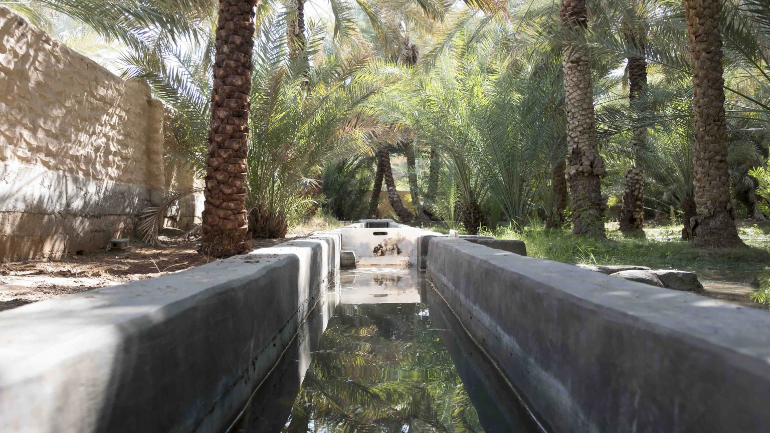
Hili is Al Ain’s northernmost oasis in Abu Dhabi. The oasis is yet another example of the Falaj water system, which is a mainstay of UAE oases. Al Hili Oasis is a historical site with structures dating back to the early 1800s. The most notable of these is the Bin Hadi al Darmaki House, which was home to His Highness Sheikh Zayed the First generation.
Read more: UAE Geological Heritage Sites
QIDFA Oasis
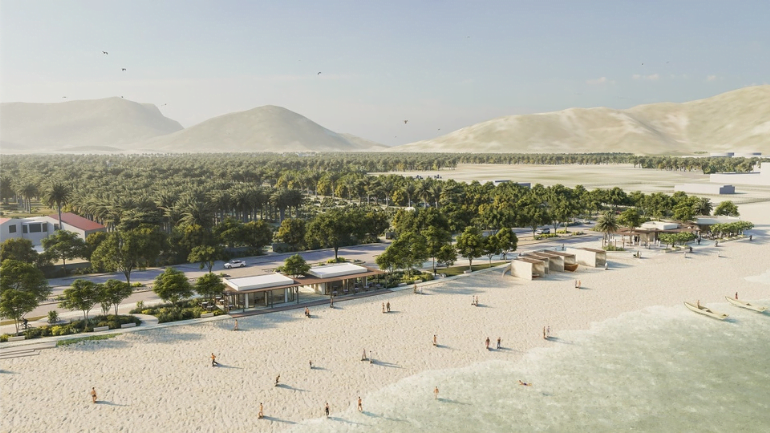
The name Qidfa Oasis in the UAE refers to the location of a burial from the Wadi Suq period, which lasted from 2,000 to 1,300 BC. Archaeological digs near the oasis discovered hundreds of artifacts, which are now on display at the Fujairah Museum. Weaponry, pottery, and coins are examples of this. The most intriguing of these discoveries is a bowl made from an ostrich egg that dates back more than 2,000 years.
Read more: UAE camping locations
WADI AL BIH
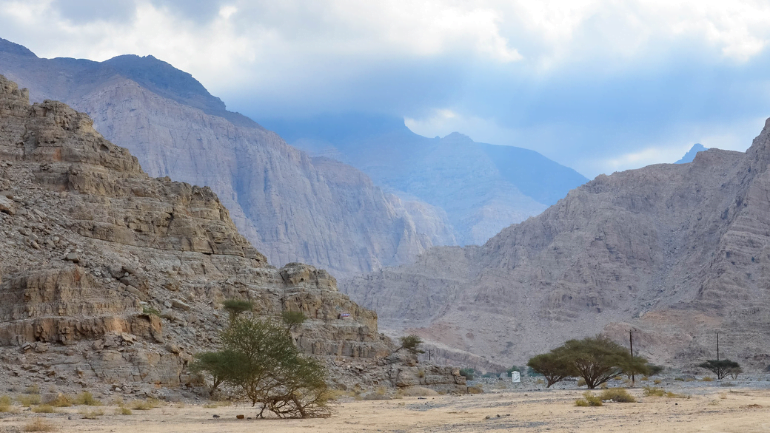
This Ras Al Khaimah location combines valley and oasis characteristics. Wadi Al Bih is a popular hiking destination in the northern part of the emirate, at the top of the Hajar Mountains. In this UAE oasis, you can find emerald-green pools of water surrounded by greenery and flowers. Hiking, bird watching, and photography are among the activities available at Wadi Al Bih, which is ideal for an adventurous road trip.
Take a look at: Ramadan UAE
AL JAHILI Oasis
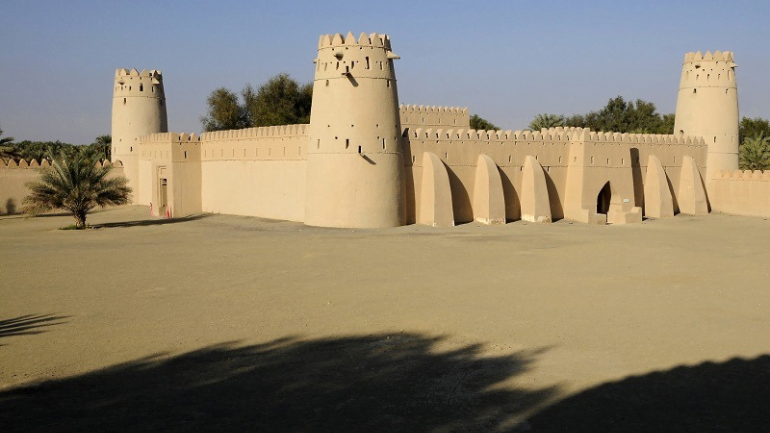
This is the tiniest of Al Ain’s oases. It is the location of the Al Jahili Fort, which opened to the public in 2008. It was built in the 1890s on the orders of His Highness Sheikh Zayed the First to serve as the residence for the Al Nahyan ruling family. Furthermore, it is one of the largest forts in the region. Today, the fort is a cultural hub and a major tourist attraction.
Read more: Henna art UAE
What is the largest oasis in the UAE?
Al Ain Oasis is the largest oasis in Al Ain, which is located in the Emirate of Abu Dhabi, United Arab Emirates. The oasis is well-known for its underground irrigation system, which uses borehole water to irrigate farms and palm trees.
Is there an oasis in the UAE?
There is a magnificent oasis that is a sight for sore eyes and one of Abu Dhabi’s most beautiful oases. Here you can take a break from city life and admire 147,000 date palm trees, over 100 different types of vegetation, and historical relics such as the Falaj irrigation system.
Is there an oasis in Abu Dhabi?
The largest oasis in the UAE is Al Ain Oasis, followed by Liwa Oasis in Abu Dhabi.
Does Dubai have an oasis?
The United Arab Emirates’ twin oases are Dubai and Abu Dhabi. This creates a striking visual contrast between the green date palm groves and the tall orange-red sand dunes. The Liwa Oasis stretches for more than 100 kilometers east-west and contains some of the world’s largest sand dunes, with many rising more than 150 meters in height. There is also The Dubai Silicon Oasis, or DSO is a 7.2-square-kilometer free-trade zone established by the Dubai government in 2003. It is situated in the Dubai neighborhood of Nadd Hessa.
This concludes our list of popular UAE oasis locations. Of course, the region’s desert landscape provides an abundance of opportunities for locals and tourists to engage in desert-themed recreational activities.
